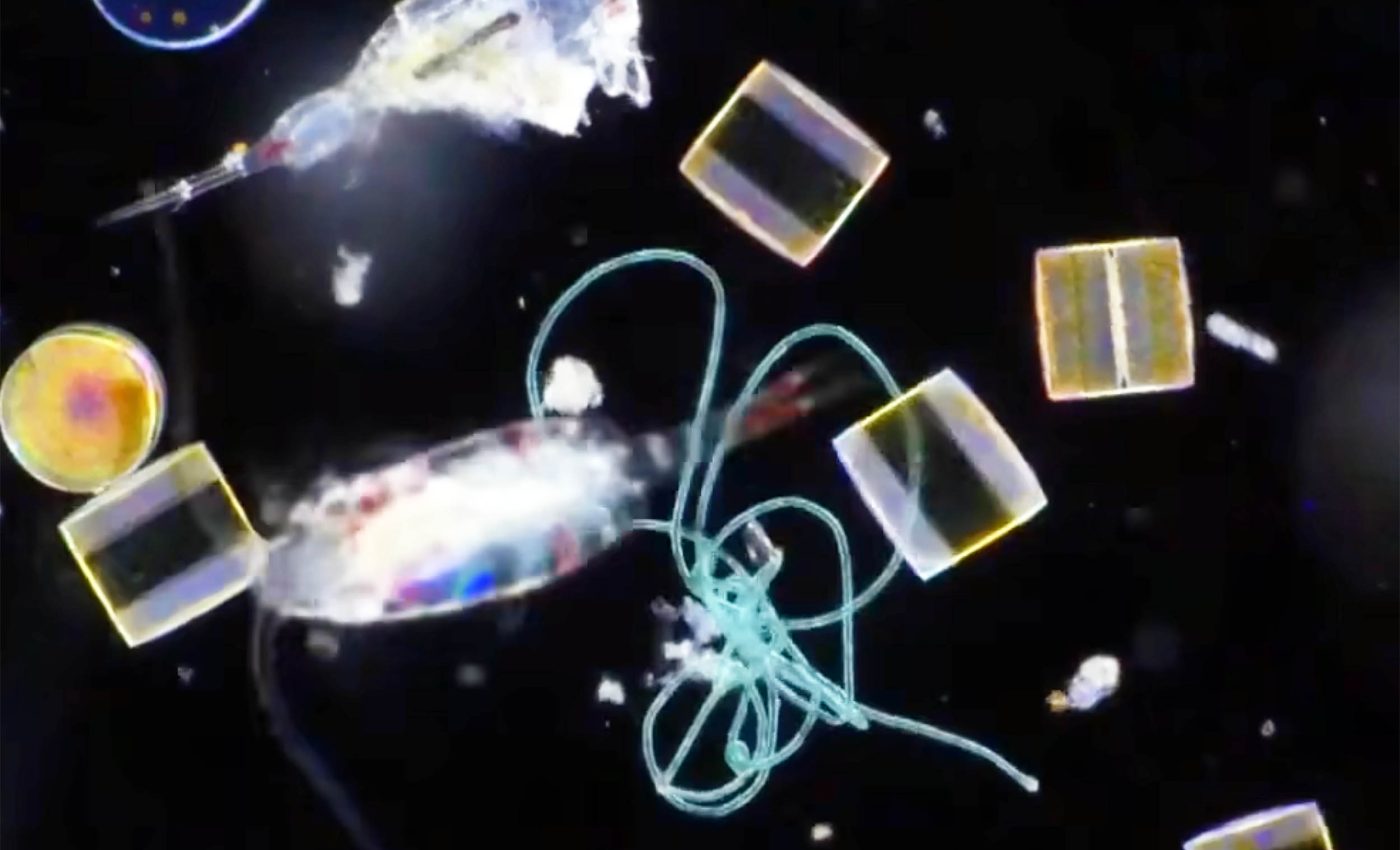
Nanoplastic particles have infiltrated the ocean's food web at the most important levels
A four week voyage across the North Atlantic has uncovered a pollutant so small that standard nets could never snag it. Researchers found that plastic particles under one micrometer, known as nanoplastics, saturate ocean water from the Azores to Europe.
When the team scaled their measurements up, they calculated roughly twenty seven million tons of these specks floating in the top 650 feet of the North Atlantic, rivaling every estimate of larger debris for the entire world ocean.
This estimate comes from geochemist Helge Niemann of the Royal Netherlands Institute for Sea Research and Utrecht University, who worked with graduate student Sophie ten Hietbrink aboard the research vessel RV Pelagia.
Detecting invisible plastic particles
Ten Hietbrink drew two‑liter samples at twelve stations, collecting water from the surface, 3,300 feet, and near the seabed. She passed each sample through filters finer than a red blood cell.
Back in the Utrecht lab, the residue was baked inside a proton transfer reaction mass spectrometer, a device that fingerprints polymers by the gases they release.
“By drying and heating the remaining material, we were able to measure the characteristic molecules of different types of plastics,” noted Ten Hietbrink.
The approach allowed the crew to log polyethylene terephthalate, polystyrene, and polyvinyl chloride even at 15,000‑foot depths. Every vial, no matter its origin, contained plastic.
Because the mass spectrometer ignores pieces above one micrometer, the expedition focused exclusively on bits far smaller than conventional microplastic, the fragments between one micrometer and five millimeters often photographed on beaches.
Shocking amount of ocean plastic
When the numbers from each station were extended across latitudes eight to fifty-five degrees north, the tally reached masses never before assigned to plastic pollution. The final figure equals the combined cargo of almost 2,000 container ships.
Niemann described the result as a shocking amount and explained that it finally answers the puzzle of missing plastic that production statistics could not account for.
“There is more plastic in the form of nanoparticles floating in this part of the ocean than there is in larger particles floating in the Atlantic or even all the world’s oceans,” said Niemann.
The data also reshape the popular image of ocean garbage patches. Nets that trap bottle caps and food wrappers sample only a thin veneer; the bulk of the load is invisible and dispersed.
Within the North Atlantic subtropical gyre, currents corral microplastics at the surface, yet the researchers found the highest nanoplastic concentrations closer to the European shelf, hinting at strong land-based sources.
The nanoplastic concentration dropped by roughly one half at 3,300 feet, and fell to about a third of surface levels near the seabed – yet plastic still appeared at every depth.
Nanoplastics harm animals and humans
Laboratory and clinical studies show that particles smaller than a micrometer can slip past the intestinal lining and enter the bloodstream, where they appear in human blood samples.
Once circulating, they can also cross the blood‑brain barrier, ferrying other contaminants into nervous tissue – as demonstrated in mice.
Marine life confronts the same risk. Bacteria may mistake nanoplastics for food, zooplankton ingest them, and the particles ascend the food web to fish and seabirds.
A recent meta‑analysis concludes that smaller pieces accumulate more readily than larger debris and may trigger oxidative stress in cells.
Field experiments in the Mediterranean have linked nanoplastic exposure to reduced filtration rates in farmed filter feeder mussels, a sector worth more than $4 billion to coastal economies.
Economic losses could rise if shellfish accumulate particles that lower growth or market appeal, adding a financial dimension to what was once viewed solely as an environmental issue.
Where the fragments come from
Sunlight bleaches and cracks larger items at the surface, eventually grinding them into nanoscale dust. River mouths add steady plumes of city trash each day.
The air itself delivers particles. Atmosphere monitors detect plastic aerosols over both continents and oceans, which settle by rainfall or dry deposition.
Once in seawater, nanoplastics no longer obey buoyancy rules. Their motion is governed by Brownian motion, letting them drift vertically and reach depths where light never penetrates.
Sediment cores from the deep North Pacific and equatorial trenches already hold threads of polyester and shards of polyvinyl chloride, proving that tiny plastics sink or hitchhike on marine snow to the seabed.
Types of ocean plastic still unclear
Curiously, the expedition detected no nanoparticles of polyethylene or polypropylene, the two polymers that dominate surface trash. Niemann suspects chemical weathering may hide their fingerprints, or the fragments may degrade faster than they form.
Future cruises will test other oceans and refine techniques to reveal modified polymers, because the Atlantic is unlikely to be unique.
Researchers also need time‑series records to track whether nanoplastic levels continue climbing or have reached a plateau.
Equally urgent is understanding how mixtures of plastic and natural organic matter interact, potentially altering toxicity.
Choosing prevention over cleanup
Niemann stresses that the particles already adrift are beyond recovery; their size makes skimming devices useless. The logical path is to curb new emissions.
Several countries now restrict the use of microbeads in cosmetics and plan to phase out certain single‑use items, yet production of virgin plastic keeps rising faster than recycling capacity.
Standardized monitoring that includes nanoscale particles would give policymakers a clearer target and let them judge whether interventions are working.
Citizen science beach cleanups, while unable to net nanoparticles, still remove items that would otherwise weather into new fragments, providing a frontline defense against future invisible pollution.
The study is published in the journal Nature.
—–
Like what you read? Subscribe to our newsletter for engaging articles, exclusive content, and the latest updates.
Check us out on EarthSnap, a free app brought to you by Eric Ralls and Earth.com.
—–













